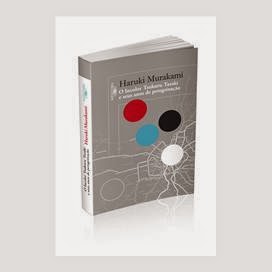http://www.theguardian.com/books/gallery/2014/sep/18/haruki-murakami-illustrated-the-strange-library-exclusive-preview
On the CMYK page (belonging to Vintage Design), one can read what appears to be a text written by the book designer, whose name I was unable to find anywhere (if any readers know it, please write a comment below). What the illustrator has to say is really interesting; here is one passage:
The text of The Strange Library is fully illustrated throughout, with a variety of drawings, images, illustrations, and photographs; and they are taken from a wealth of printed sources; from a 1950s cookery book to Birds of the British Islands, 1907, a book on popular astronomy from 1894 to a Victorian book on Locks and keys. The majority of the illustrations were sourced from old books I found in the London Library. Founded in the 1840’s, the library is a labyrinth crammed to the ceiling with treasures on seemingly every subject. The metal stacks date from 1890s and are a marvel of architecture, steel grille floors allowing you to see to other floors above and below. Here are housed the books in Science and Miscellaneous, our favourite sections for the sort of research we did.
My picture researcher and I became literally lost in its corridors! There was a great sense of achievement when we pulled out a hidden gem that matched a particular line or part of Murakami’s text. I was interested in how the style of illustration plates and printing techniques evoked a certain period. My favourite was the almost fluorescent colours found in the plate section of a 1950’s German cookery book. For some pages like that of the caterpillars, I had to carefully amalgamate images from different sources. Only two illustrations had to be commissioned for the book as we just couldn’t find images for doughnuts or a ball and chain.
To read the whole thing go to: http://vintagebooksdesign.tumblr.com/post/98295389741/thestrangelibrary-harukimurakami
An article about the book's release appeared in the New York Times. The author, Alexandra Alter, wrote this about the graphic aspect of the American edition:
Knopf is fleshing out “The Strange Library” with full-color art throughout in a lavish volume designed by Chip Kidd, Knopf’s associate art director. Mr. Kidd said he drew on his own collection of vintage Japanese graphics as inspiration for the design.
Here is a YouTube video in which Mr. Kidd explains how he designed the American version of 1Q84:
As far as I know, no illustrations from the American edition have been released so far except, for the cover image.
To read the whole NYT article, go to: http://artsbeat.blogs.nytimes.com/2014/09/01/new-96-page-murakami-work-coming-in-december/?_php=true&_type=blogs&_r=0




















